Abstract
1. Arterial plasma catecholamine concentrations, rectal temperatures and respiratory rates were measured in the unanaesthetized ox in a cool environment (15/11·5° C dry bulb/wet bulb (D.B./W.B.) in a hot, dry environment (40/22° C), in a hot, humid environment (40/39·1° C) and during localized heating of the hypothalamus.
2. There was no significant difference in the plasma catecholamine levels of animals exposed to a cool environment (15/11·5° C) and to a hot, dry (40/22° C) environment.
3. When the animals became hyperthermic in the hot, humid environment, considerable increases in the plasma levels of adrenaline and smaller increases in noradrenaline concentration occurred.
4. Bilateral adreno-medullary denervation abolished the changes in plasma catecholamine levels associated with hyperthermia.
5. Localized heating of the anterior hypothalamus in either a cool or a warm environment did not result in any change in plasma catecholamine levels.
6. It was concluded that the source of the increased levels of plasma catecholamines during hyperthermia was the adrenal medulla and that the stimulus for their release was a nervous one rather than direct chemical or thermal stimulation of the adrenal medulla. The cause of the increased sympatho-adrenal activity was not apparent, but neither thermal stimulation of cutaneous and hypothalamic receptors nor the associated changes in respiratory activity seemed to be implicated in the response.
Full text
PDF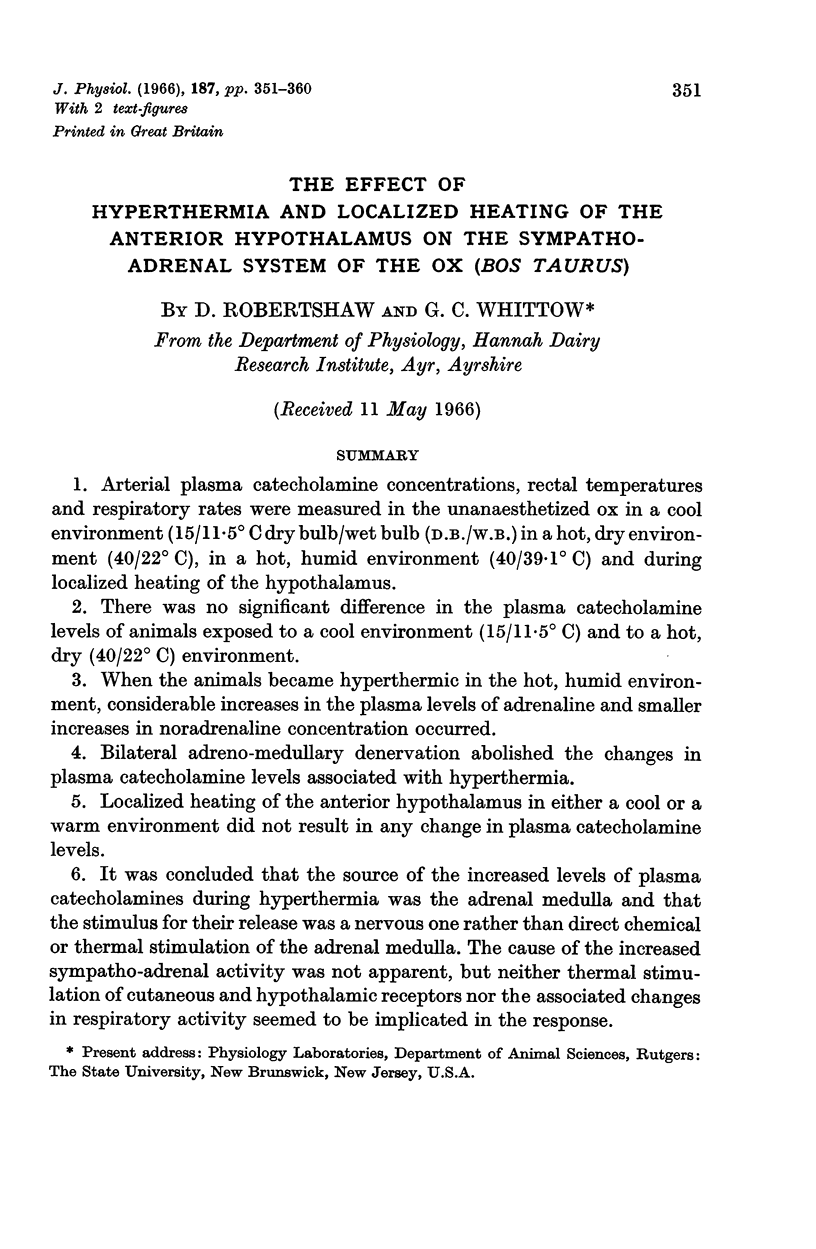
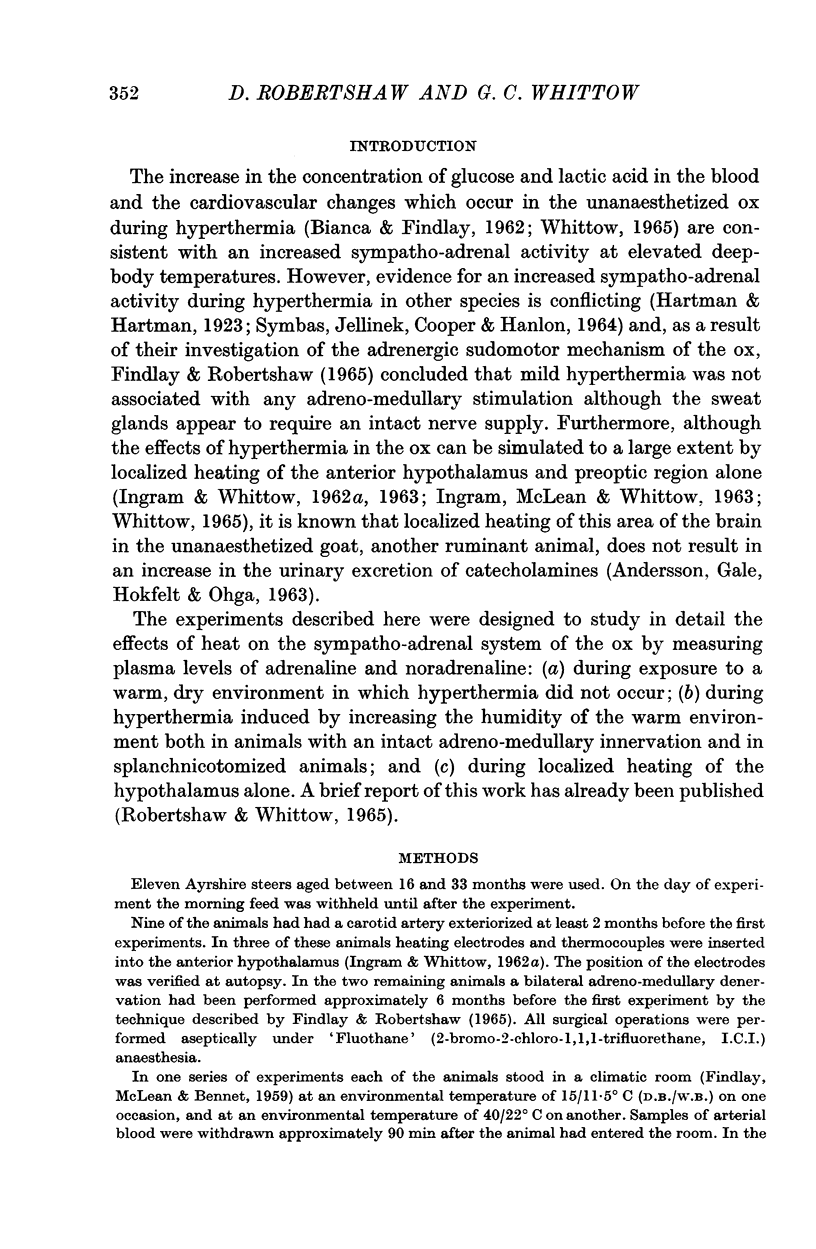
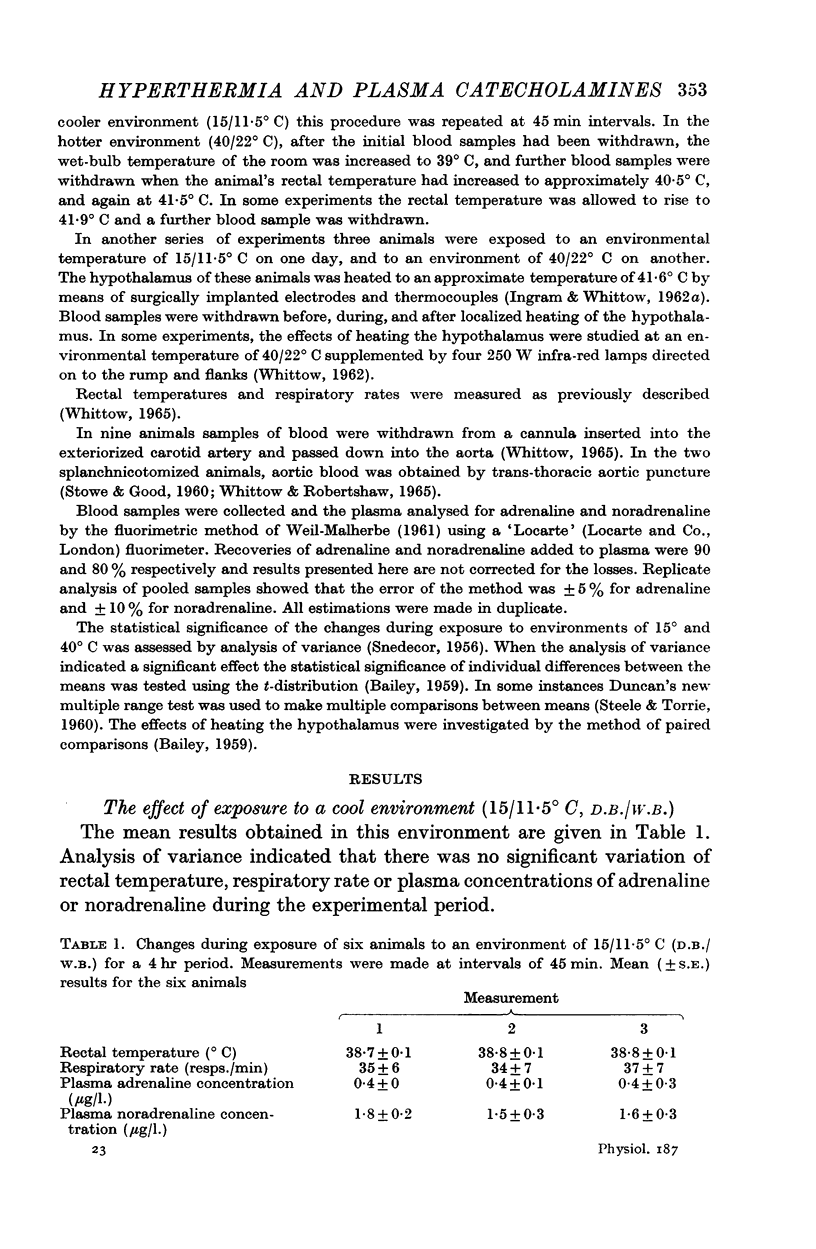
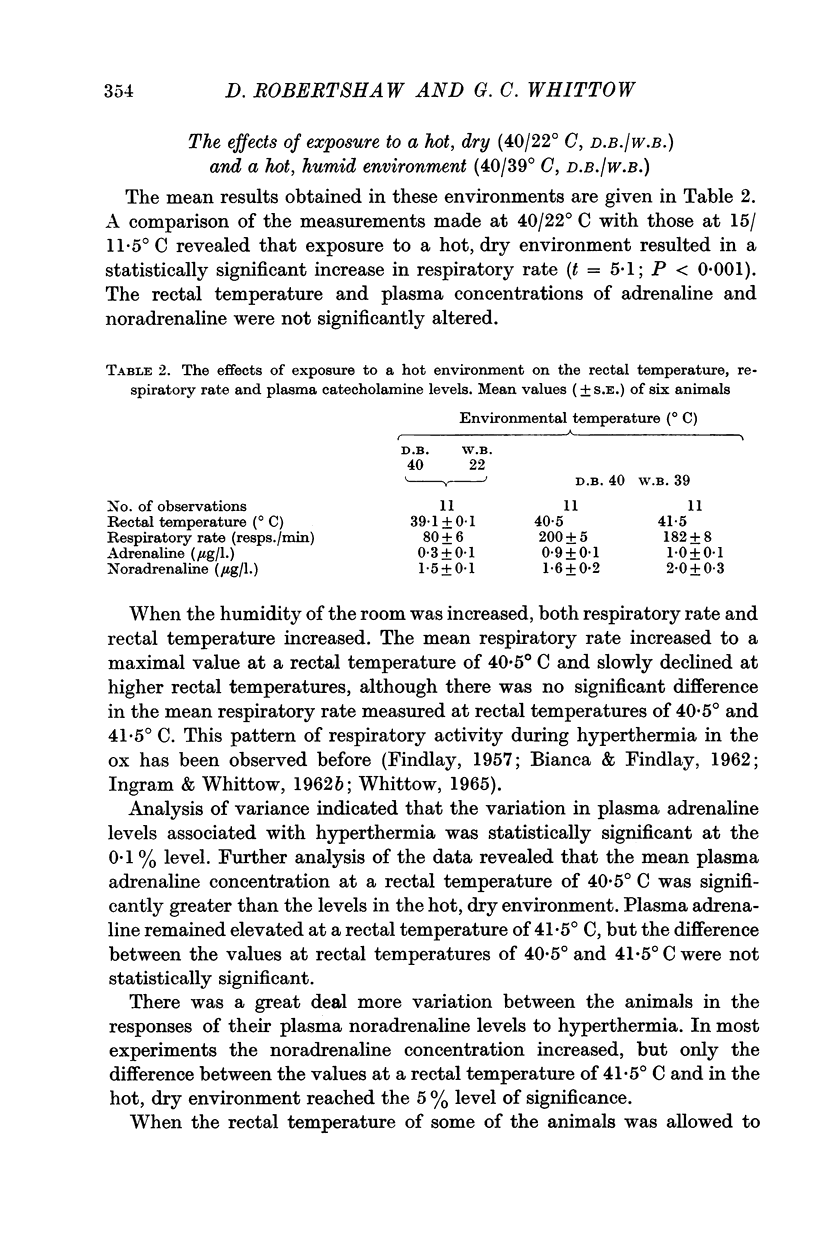
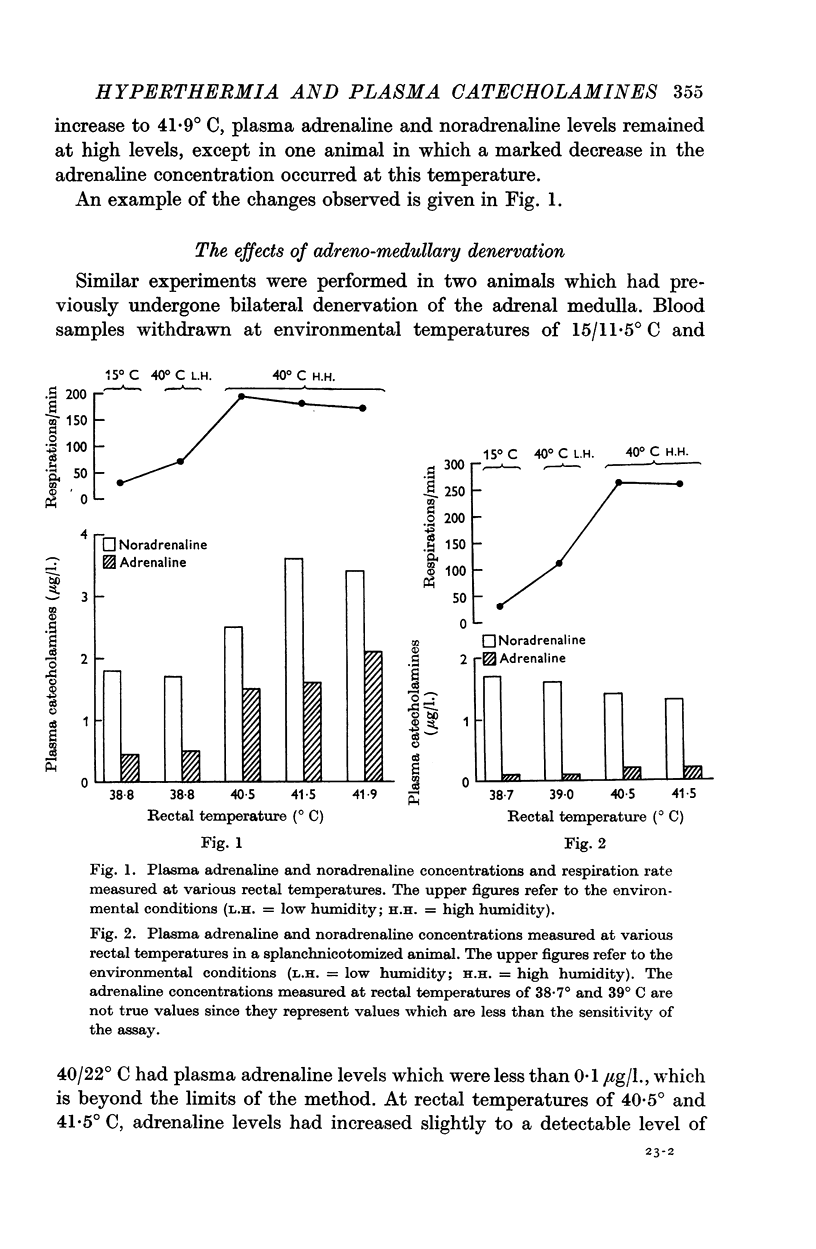
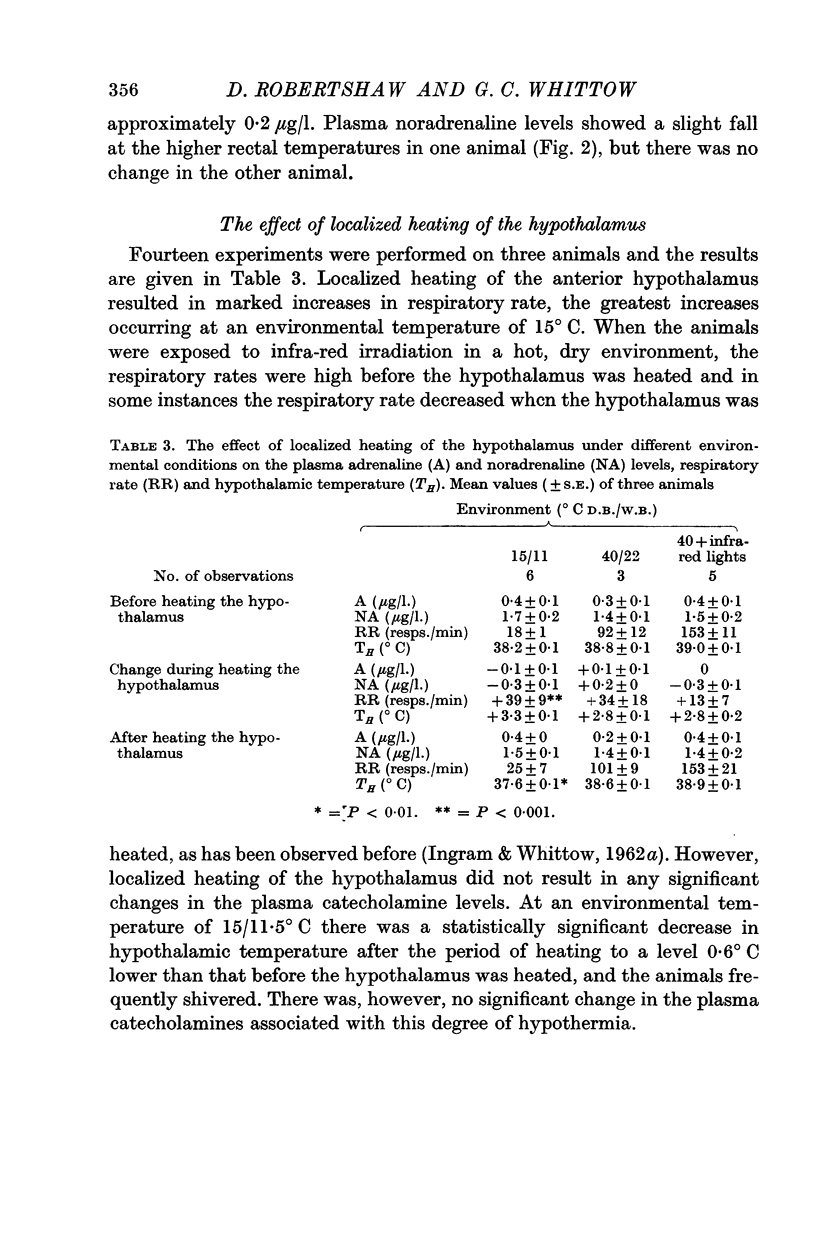
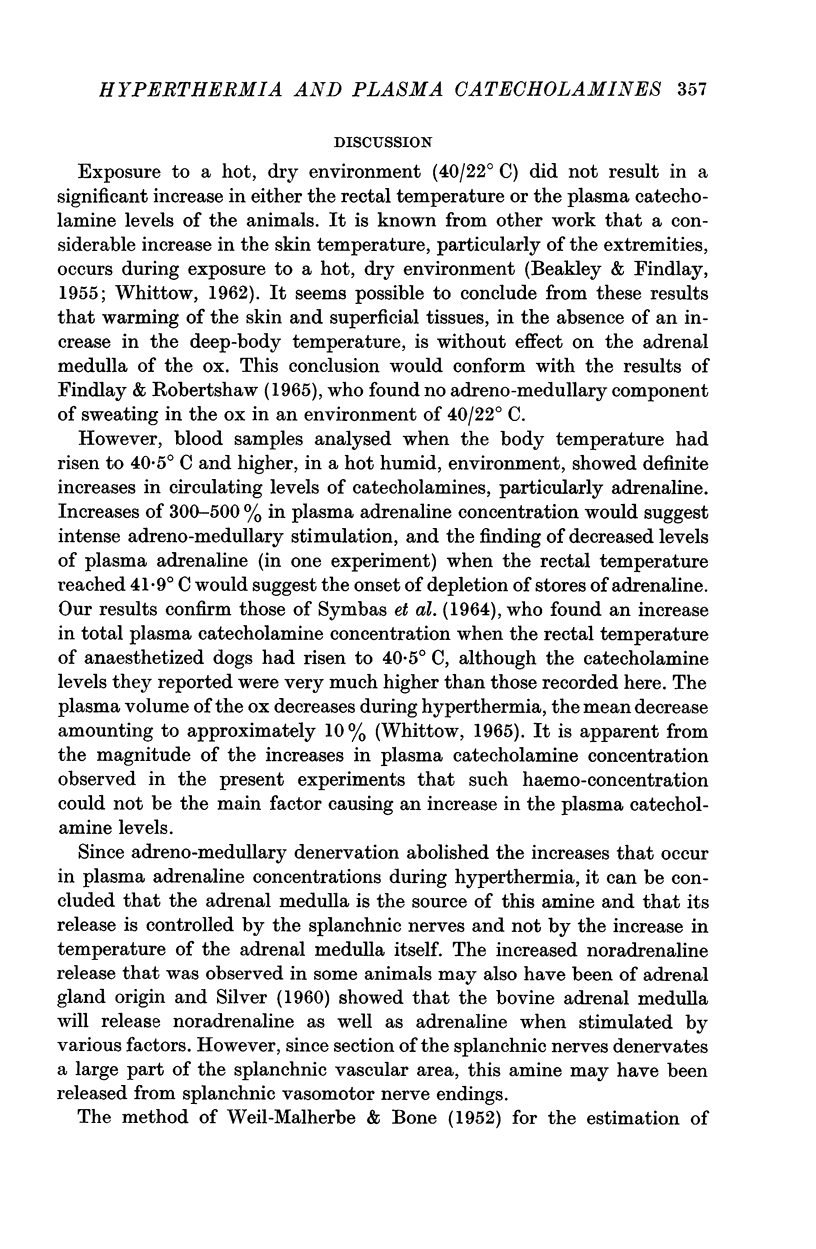
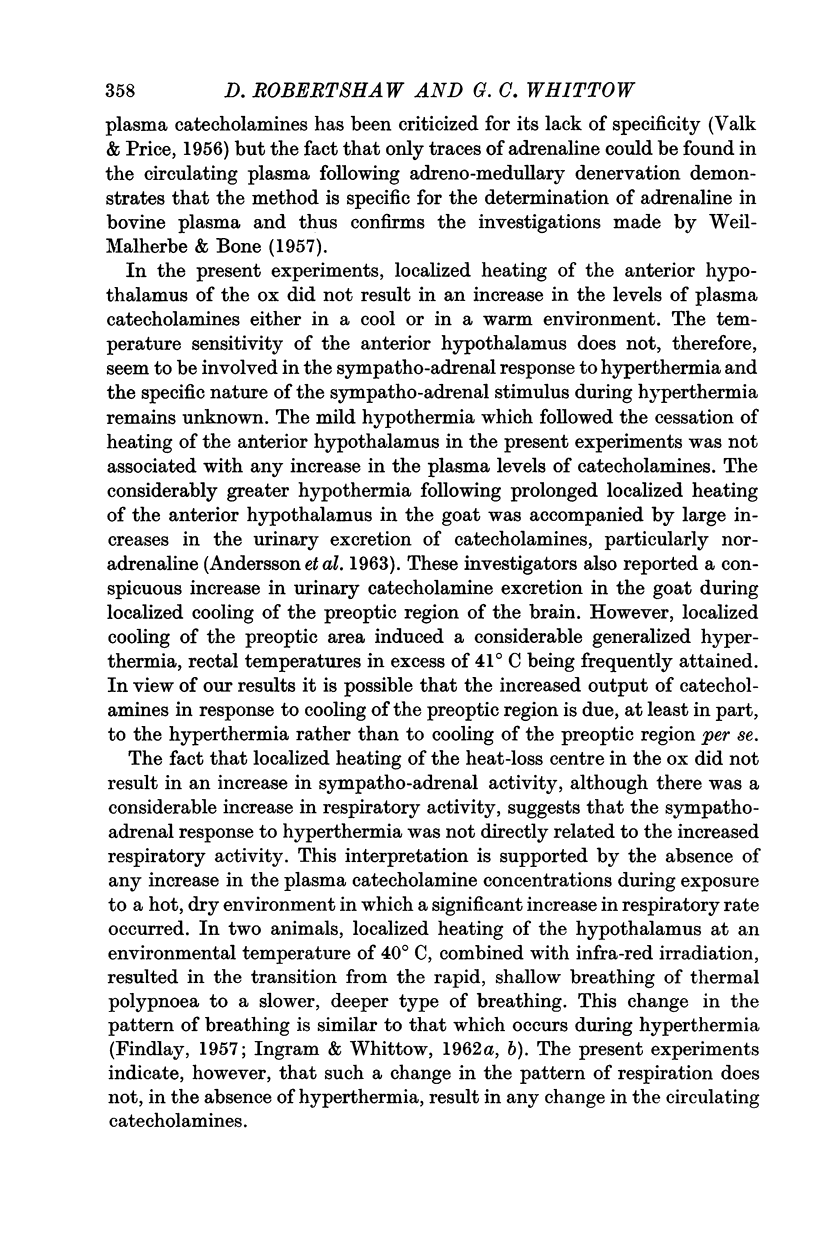
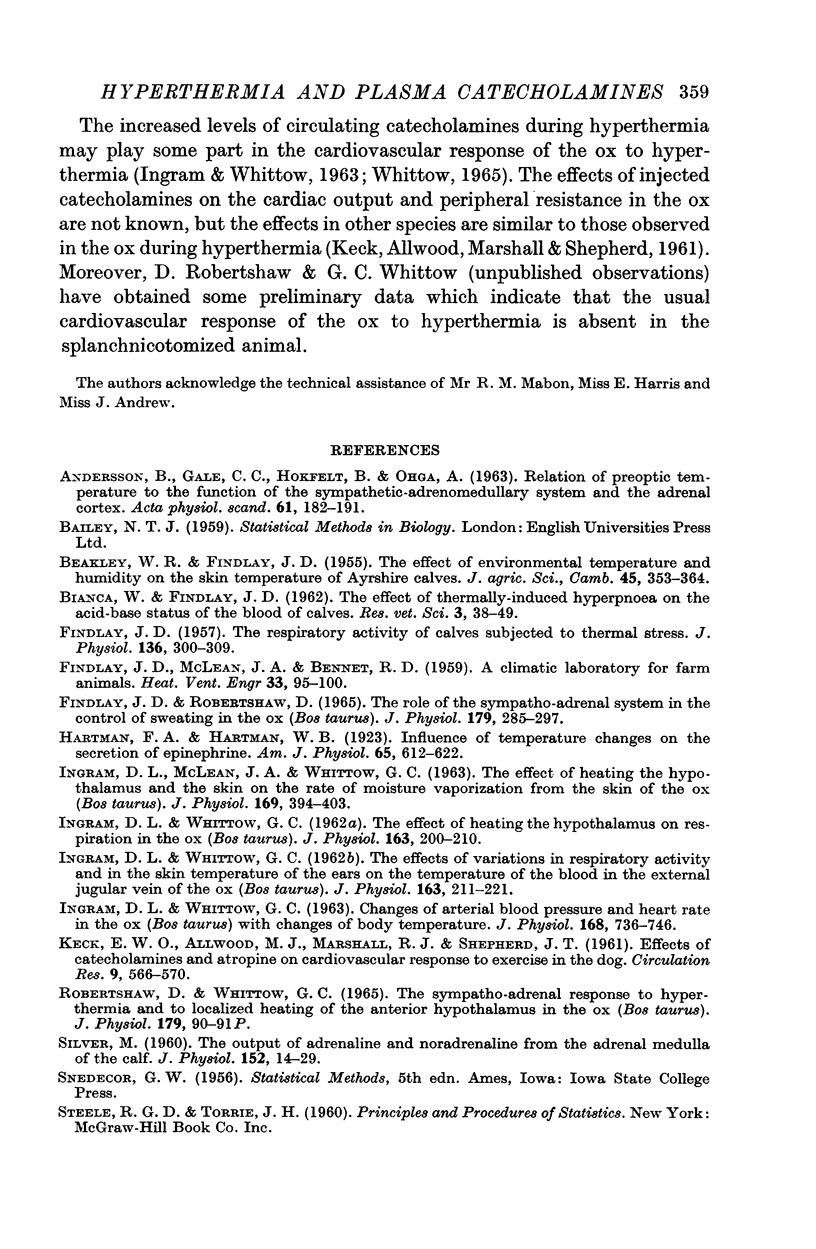
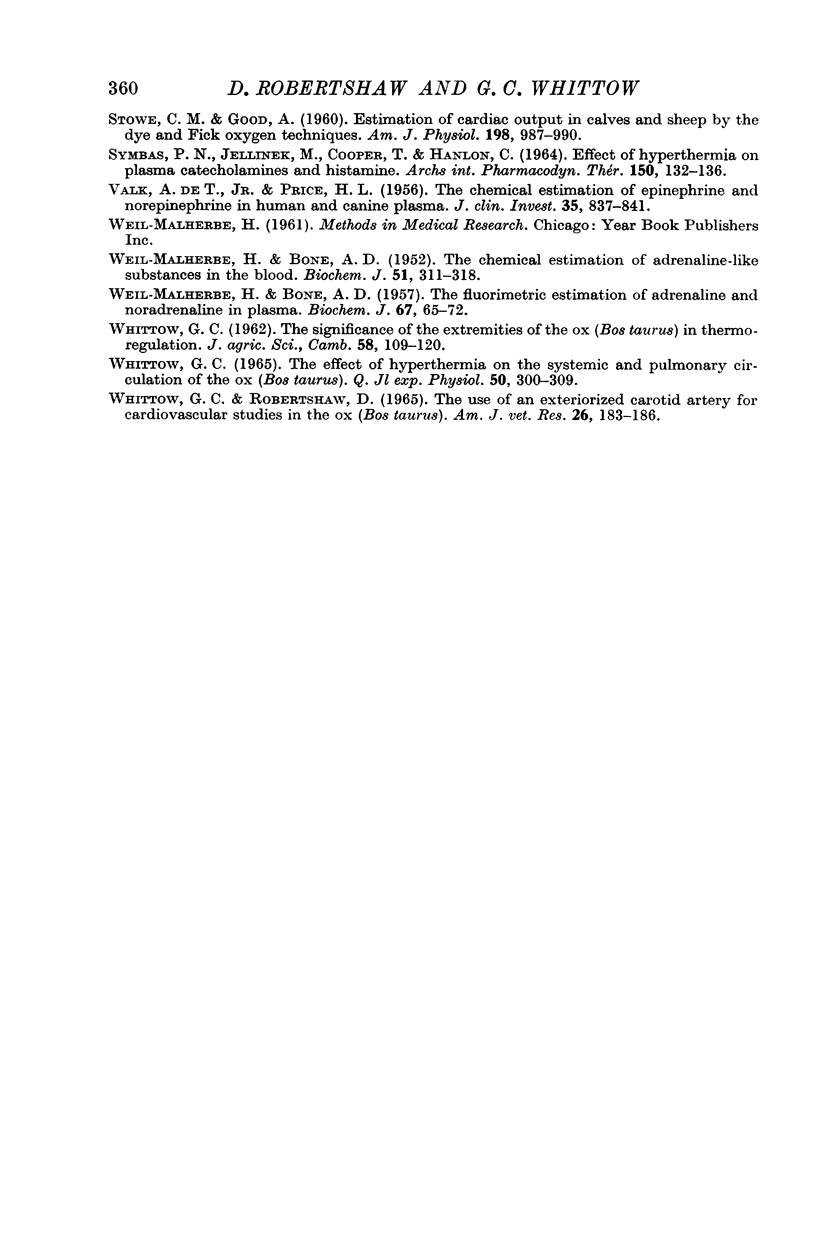
Selected References
These references are in PubMed. This may not be the complete list of references from this article.
- ANDERSSON B., GALE C. C., HOEKFELT B., OHGA A. RELATION OF PREOPTIC TEMPERATURE TO THE FUNCTION OF THE SYMPATHICO--ADRENOMEDULLARY SYSTEM AND THE ADRENAL CORTEX. Acta Physiol Scand. 1964 May-Jun;61:182–191. doi: 10.1111/j.1748-1716.1964.tb02954.x. [DOI] [PubMed] [Google Scholar]
- DE VALK A. T., Jr, PRICE H. L. The chemical estimation of epinephrine and norepinephrine in human and canine plasma. I. A critique of the ethylenediamine condensation method. J Clin Invest. 1956 Aug;35(8):837–841. doi: 10.1172/JCI103337. [DOI] [PMC free article] [PubMed] [Google Scholar]
- FINDLAY J. D. The respiratory activity of calves subjected to thermal stress. J Physiol. 1957 Apr 30;136(2):300–309. doi: 10.1113/jphysiol.1957.sp005761. [DOI] [PMC free article] [PubMed] [Google Scholar]
- Findlay J. D., Robertshaw D. The role of the sympatho-adrenal system in the control of sweating in the ox (Bos taurus). J Physiol. 1965 Jul;179(2):285–297. doi: 10.1113/jphysiol.1965.sp007663. [DOI] [PMC free article] [PubMed] [Google Scholar]
- INGRAM D. L., MCLEAN J. A., WHITTOW G. C. THE EFFECT OF HEATING THE HYPOTHALAMUS AND THE SKIN ON THE RATE OF MOISTURE VAPORIZATION FROM THE SKIN OF THE OX (BOS TAURUS). J Physiol. 1963 Nov;169:394–403. doi: 10.1113/jphysiol.1963.sp007264. [DOI] [PMC free article] [PubMed] [Google Scholar]
- INGRAM D. L., WHITTOW G. C. CHANGES OF ARTERIAL BLOOD PRESSURE AND HEART RATE IN THE H CHANGES OF BODY TEMPERATURE. J Physiol. 1963 Oct;168:736–746. doi: 10.1113/jphysiol.1963.sp007219. [DOI] [PMC free article] [PubMed] [Google Scholar]
- INGRAM D. L., WHITTOW G. C. The effect of heating the hypothalamus on respiration in the ox (Bos taurus). J Physiol. 1962 Sep;163:200–210. doi: 10.1113/jphysiol.1962.sp006968. [DOI] [PMC free article] [PubMed] [Google Scholar]
- INGRAM D. L., WHITTOW G. C. The effects of variations in respiratory activity and in the skin temperatures of the ears on the temperature of the blood in the external jugular vein of the ox (Bos taurus). J Physiol. 1962 Sep;163:211–221. doi: 10.1113/jphysiol.1962.sp006969. [DOI] [PMC free article] [PubMed] [Google Scholar]
- KECK E. W., ALLWOOD M. J., MARSHALL R. J., SHEPHERD J. T. Effects of catecholamines and atropine on cardiovascular response to exercise in the dog. Circ Res. 1961 May;9:566–570. doi: 10.1161/01.res.9.3.566. [DOI] [PubMed] [Google Scholar]
- SILVER M. The output of adrenaline and noradrenaline from the adrenal medulla of the calf. J Physiol. 1960 Jun;152:14–29. doi: 10.1113/jphysiol.1960.sp006466. [DOI] [PMC free article] [PubMed] [Google Scholar]
- STOWE C. M., GOOD A. L. Estimation of cardiac output in calves and sheep by the dye and Fick oxygen techniques. Am J Physiol. 1960 May;198:987–990. doi: 10.1152/ajplegacy.1960.198.5.987. [DOI] [PubMed] [Google Scholar]
- SYMBAS P. N., JELLINEK M., COOPER T., HANLON C. EFFECT OF HYPERTHERMIA ON PLASMA CATECHOLAMINES AND HISTAMINE. Arch Int Pharmacodyn Ther. 1964 Jul 1;150:132–136. [PubMed] [Google Scholar]
- WEIL-MALHERBE H., BONE A. D. The chemical estimation of adrenaline-like substances in blood. Biochem J. 1952 Jun;51(3):311–318. doi: 10.1042/bj0510311. [DOI] [PMC free article] [PubMed] [Google Scholar]
- WEIL-MALHERBE H., BONE A. D. The fluorimetric estimation of adrenaline and noradrenaline in plasma. Biochem J. 1957 Sep;67(1):65–72. doi: 10.1042/bj0670065. [DOI] [PMC free article] [PubMed] [Google Scholar]
- WHITTOW G. C., ROBERTSHAW D. THE USE OF AN EXTERIORIZED CAROTID ARTERY FOR CARDIOVASCULAR STUDIES IN THE OX (BOS TAURUS). Am J Vet Res. 1965 Jan;26:183–186. [PubMed] [Google Scholar]
- Whittow G. C. The effect of hyperthermia on the systemic and pulmonary circulation of the ox (Bos taurus). Q J Exp Physiol Cogn Med Sci. 1965 Jul;50(3):300–311. doi: 10.1113/expphysiol.1965.sp001796. [DOI] [PubMed] [Google Scholar]


